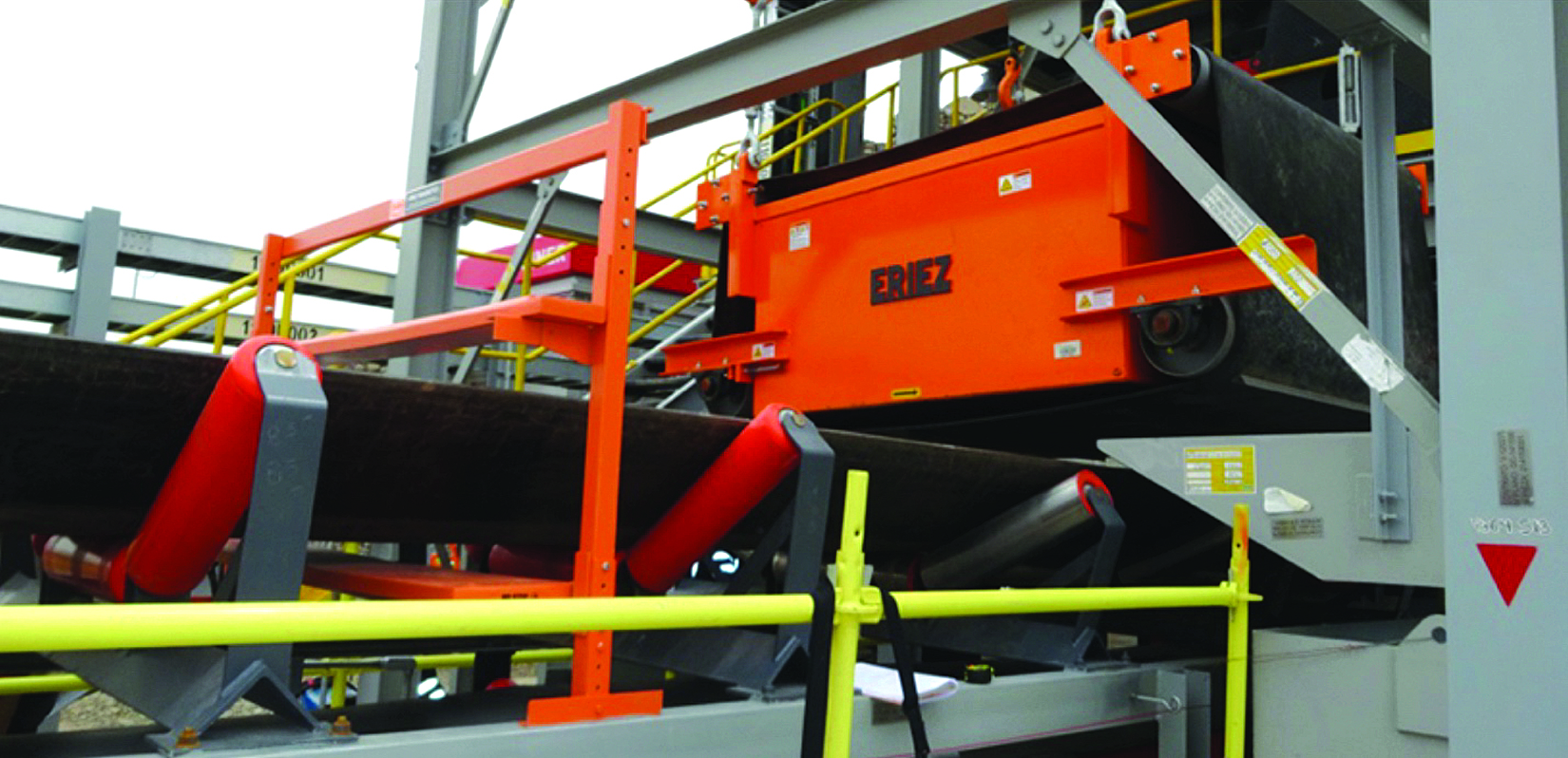
Strategic placement of a suspended electromagnet can be critical to protect belt- or apron-feeder equipment in high-tonnage plants, according to magnetic separation technology specialist Eriez.
By Chris Ramsdell
When mineral processing plants producing copper sulphide concentrates and oxide leaching feedstocks began to exceed the operating tonnages of traditional installations, it created a need for larger capacity belt conveyors and apron feeders. Eriez would like to share its knowledge about these types of installations, especially those in which suspended electromagnets are used.
Apron Feeder Magnets
Apron feeders are slow-moving, heavily loaded conveyors that feed a controlled stream, typically a deep bed of ore from a bulk holding location or bunker to a large capacity crusher. Because apron feeders use sprockets and caterpillars, they are replacing belt feeders that use rubber belts with motorized head pulleys to convey the material. We have found the damage to belts and clogging of transfer points from tramp iron now require larger magnetic separators.
Removal of tramp metal can prevent these serious problems. Corrective action is important for two reasons:
• Removing tramp iron early in the ore stream protects downstream equipment from potential costly damage.
• Installing apron feeder magnets before the primary large capacity crusher enables better operating efficiency in secondary and tertiary crushing steps (made up of multiple parallel units) since tramp metal is removed at the onset.
Suspended Electromagnet Protection
Belt and apron feeders have been successfully protected by suspended electromagnets in many industrial applications for years. The sprockets and caterpillars for apron feeders must be nonmagnetic, preferably made of iron with a high manganese content. The nonmagnetic caterpillars — which are typically specified by the customer — should come from the same manufacturer as the apron feeder.
When using a conveyor belt, the shell of the head pulley should be nonmagnetic stainless steel. When feeding pebbles, the head pulley should also be nonmagnetic.
For primary crushing applications in which the ore is normally sized 15.2 to 20.3 cm (6 to 8 in.), the main purpose of the suspended electromagnet is to protect the belts and to avoid the clogging of the chutes. Tramp iron measuring less than 10 cm (4 in.) is not typically harmful to the belts or chutes, so electromagnets are set to capture only the larger pieces of tramp iron.
For copper sulphides processed in SAG mills, downstream suspended magnets are not required after the belt or apron feeder magnets because there are no secondary and tertiary cone crushers. For oxide leaching plants, manual or self-cleaning standard magnets are used on belt conveyors to remove tramp metal after the primary crushers, but before the cone crushers and the leaching piles.
To remove tramp iron smaller than 10 cm (4 in.), a nonmagnetic shell pulley is required, especially for pebble applications. For example, at Chile’s Chuquicamata, Pelambres, Esperanza mines and the Antamina mine in Perú, the shell of the pulleys are nonmagnetic.
Belt feeders are used more often at the discharge end of suspended electromagnets because apron feeders are historically more expensive and have limited application (mainly for minerals larger than those found on belt feeders).
For apron feeders in current use, the customer or supplier is not always willing to change the existing magnetic caterpillars to ones that are nonmagnetic.
It is imperative to strategically place a suspended electromagnet to protect belt or apron feeder magnetic separators in mineral processing plants providing copper sulphide concentrates and oxide-leaching feedstocks on high tonnage installations. It is critical to select either a belt or apron-feeder magnetic separator to handle larger capacities.
Chris Ramsdell is product manager of magnetic separation at Eriez.






